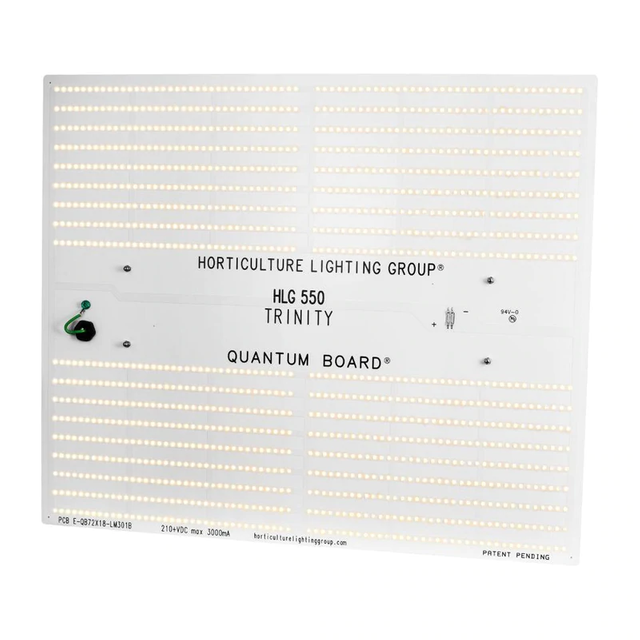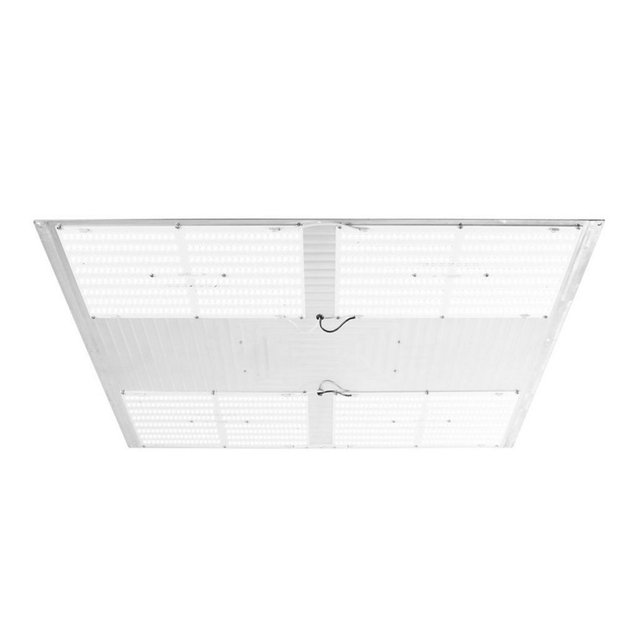Horticulture Lighting Group HLG 550 V2 VS AgroMax RAW 550 4000K LED Quantum Board Grow Light
So you want to begin your journey as a houseplant enthusiast. But the question arises of what the proper, necessary steps are to ensure that your new green friends will thrive in your apartment or house.
Don’t worry — we’re here to offer some advice to get you started on making your environment perfect and healthy by choosing the best grow lights for house plants!
Science basics: What is photosynthesis?
Remember learning about photosynthesis in middle school science class? Great, let’s get back to basics for a minute. Photosynthesis is a process that occurs in plants. It converts light energy into chemical energy that the plant can then use to grow. Photosynthesis occurs differently depending on the plant.
This means that plants sometimes require different wavelengths of light to grow. Grow lights can either mimic the light spectrum of the sun or emit specific wavelengths needed to help an indoor plant flourish. For example, blue light can help with foliage, while red has an effect on root formation and flowering.
What’s the difference between grow lights and traditional lights?
So what’s the difference between grow lights and traditional lights? Wavelengths and heat. Traditional lights only offer narrow wavelengths, meaning your plants won’t get the right light, and photosynthesis cannot occur. Additionally, traditional lights give off heat, which can easily scorch and burn your plants.
Horticulture Lighting Group HLG 550 V2

Features:
The HLG Quantum Board light is well made as it has a larger aluminium panel and a dimmable MeanWell driver to control the intensity of the light. You can replace a single-ended 1000 watt HID, with a white light quantum LED grow light, your plants will grow quickly at all stages and get higher yields than similar light models. Growers often use it to increase plants production in the grow room. Simply plug it in and enjoy the maximum harvest. The grow lights use aluminium heat sinks to manage and reduce heat without creating noise in the growing environment. At full capacity, it barely consumes 480 watts of power. Otherwise, the dimming option allows you to reduce power consumption by up to 200 watts.
AgroMax RAW 550 4000K LED Quantum Board Grow Light
Features:
This grow light is built for use in any indoor growing environment, the fixture incorporates a unique conformal coating to protect the circuitry from water, humidity, dirt, and corrosion. Each unit is capable of providing up to 6′ x 6′ of coverage for vegetative plants or 4.5′ x 4.5′ of coverage for mature flowering plants. AgroMax RAW is also well equipped to withstand conditions in the cultivation environment. The all-new AgroMax RAW 550 4000K leads the pack of high-performance full-spectrum LED grow lights. Its Samsung LM301B LED chips and Meanwell driver produce an impressive 2.5 micromole/watt output.
What to Consider When Choosing the Best Grow Light
Whether you’re hunting for a grow light to supplement natural light for indoor overwintering of potted patio plants, or you’re looking to start seeds indoors for transplanting to the garden in spring, a grow light can help.
Cool, Warm, and Full-Spectrum
Grow lights are labeled with numbers like 2,500K or 6,500K, which tells you the temperature of the light according to the Kelvin scale of measurement. The higher the number, the cooler the light. So a bulb with a Kelvin rating of 6,000K will have a white or bluish tint, whereas a 3,000K bulb will be yellower. Each type of light — warm or cool — stimulates specific plant behavior.
If your goal is to improve foliar growth in your houseplants or grow leafy greens or seedlings, choose a cooler spectrum bulb around 6,500K. Warm light will have a lower Kelvin rating and is ideal for flower production in houseplants and fruiting plants like citrus. When in doubt, full-spectrum lights take out the guesswork and offer a combination of both cool and warm light for the best of both worlds.
LED vs. Fluorescent Bulbs
Standard fluorescent bulbs are a weak home light source but they’re great for supplementing natural light for houseplants or starting seedlings. Their cooler light makes them one-dimensional, so they’re ideal when lush foliage, not flowers, is the goal. Because their light cannot penetrate plant leaves with strong intensity, the grower must locate the light within a few inches of the top of the plant to be effective.
Full-spectrum compact fluorescent lights (CFL) are a better option. Available in tube and bulb forms, CFL grow lights are more intense than standard fluorescent lights.
LED grow lights, not to be confused with regular LED lights, are more expensive than fluorescent lights but they make up for that with longevity and energy savings. LEDs have both blue and red lights to mimic the full-color spectrum of the sun and might emit a bright, purplish glow. That’s not a big deal if the lights will be in a basement or a garage, but it’s something worth considering if they’ll be in a living area. Like fluorescent bulbs, LEDs are available in tubes for lighting a tray of seedlings or as bulbs when you want to light a specific plant.
Bulb or Stand Setup
The number of plants or seedling trays you want to grow is a good indicator of the kind of grow light best suited to your situation. Although a single bulb is perfect when positioned above a sun-loving succulent during the winter, seedling trays are better suited to a stand system that allows you to raise the light as the seedlings grow taller. So, whether it’s a premade stand with lights attached or one you build from scratch with an inexpensive wire rack and a hanging grow light bar or two, ultimately, your budget will have the final say.
Premade stand setups are pricey and if your seed-starting plans are modest, consider building your own system. However, houseplant enthusiasts might gravitate toward a more aesthetic premade grow light stand better suited to indoor living spaces.
Bells and Whistles
For houseplants, consider a full-spectrum grow light attached to a bendable or gooseneck arm that allows you to position the light directly above the plant. Some are stationary lamps for tabletops, and others have a clamp at the end of the bendable arm so you can attach the light to the edge of a desk or table. Intended for use with one or two houseplants, these lights often come with timers so you can cater to a plant’s specific light needs and a USB connector for plugging into a computer.
For seed starting and flowering houseplants, some full-spectrum grow light panels come with timers as well as remotes that allow you to change the type of light emitted based on the plant’s growth stage — cool light for seed starting, warm light for flower production, and full spectrum when you’re uncertain about the type of light you need.
Conclusion
Just like humans need a certain number of calories each day in order to function, indoor plants require a certain amount of sunlight each day to survive. How much volume is required varies based on houseplant type, growth stage, and plant care requirement.
And even if your home or apartment has plenty of windows, you likely won’t get sufficient sunlight to keep your indoor plants happy, especially during winter. That’s why artificial grow lights are beneficial to your indoor garden.
Note, however, that grow lights are no match for sunlight, but they are a great way to extend the growing season and a better alternative. So, when access to direct sunlight is limited, it’s advisable to choose the best grow lights that fit your budget and the growing needs of your houseplants.
Lighting positioning is also important as well as intensity, spectrum, and duration. The bottom line is to ensure your indoor plants get the required amount of light they need per day and as long as you don’t deprive them of it, you can sit back and watch them grow healthily — other factors considered.

That’s why artificial grow lights are beneficial to your indoor garden.